Diabetes Cured? 12 Tips That Help Reverse Type 2 Diabetes - 41 minutes read

It is often wrongly thought that type 2 diabetes is a chronic and progressive disease. This is because medicines fail to turn the tide.
Disclaimer: there is no guarantee that type 2 diabetes can be cured, but there are studies that show that adjusting the diet can help bring the disease into remission ( source). Other lifestyle tips that also have an effect have not yet been applied.
However, research shows that type 2 diabetes can be treated well and can go into remission in some people ( #overview" target="_blank">source, source). As a result, you may be able to stop taking medications, the symptoms of the disease disappear and you significantly reduce the risks of complications.
I will share with you in this article how you can reverse type 2 diabetes and whether you can cure your diabetes. Everything you will read here is scientifically proven and substantiated.
Make a cup of tea and sit down because it has become a long article. However, the article is so complete that it is important to read it completely if you want to reverse type 2 diabetes.
What you will learn in this article:
- What Causes Type 2 Diabetes
- Can you cure diabetes?
- Which lifestyle adjustments do you need to make
- What eating habits you should learn
- What you should not eat any more
type 2 diabetes in numbers
Type 2 diabetes is also known as diabetes mellitus or old-age sugar.
The word old age sugar is almost never used anymore. It would imply that type 2 diabetes is unpreventable and just part of aging, which is not the case.

More and more people today already have type 2 diabetes at a younger age. People in their thirties and forties are increasingly being diagnosed with type 2 diabetes.
There are more than 1.2 million people with diabetes in the Netherlands. About 1.1 million people have already received this diagnosis.
The rest have type 2 diabetes without being aware of it. In the initial stage, the signs and symptoms are not always directly associated with diabetes. Especially when you are still young.
Do you suspect you have type 2 diabetes? Then you can have a blood test done. The ratio between glucose and insulin in the blood is then looked at. A high value means you have diabetes.
Click to Watch this simple video on: How to Cure/ Manage Diabetes Without Drugs
Correlation between type 2 diabetes and diet
There is a clear correlation between diet and type 2 diabetes.
In recent decades, we have been eating more and more sugars and refined carbohydrates ( source).
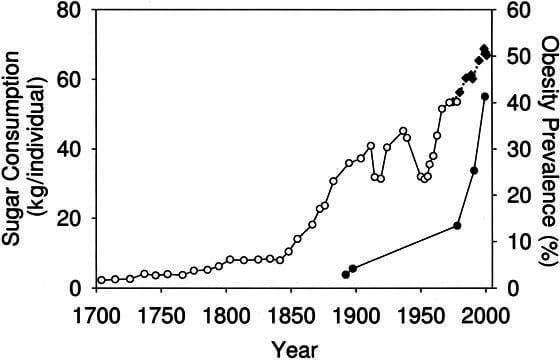
This is partly because in many light products the fats were replaced by sugar. With the removal of the fat, the taste was lost, with sugar, the product was flavored again.
In addition, food manufacturers discovered that sugar has an addictive effect, which caused consumers to eat more of their products.
In 1980, 4.7% of the world’s population had type 2 diabetes, while it is currently 8.5%.
What is type 2 diabetes?
The body has become insensitive to insulin when you have type 2 diabetes. This is called insulin resistance.
As a result, the body can no longer properly absorb glucose from the blood. As a result, the blood glucose remains too high.
This high blood sugar is harmful to health. It is harmful to the brain, joints, and nerves.
Would you like more background information about type 2 diabetes? Then I advise you to read my extensive article on type 2 diabetes.
In this, you learn, among other things, what type 2 diabetes is, what the symptoms are and what complications can occur.
In this article, I will focus further on reversing type 2 diabetes.
Can you cure diabetes?
There is no cure for type 2 diabetes in the sense that it will never come back. However, type 2 diabetes can be treated well with a healthy lifestyle.
Diabetes can then go into remission. When diabetes is in remission, you as a diabetic do not suffer from the disease symptoms and the risks of complications decrease.
It is also quite possible that the use of medicines can be reduced (or even stopped altogether). In patients with type 2 diabetes who are in the early stages (or who have suddenly lost a lot of weight), diabetes in remission is most common.
Taking pills alone will not solve the problem. To bring diabetes into remission, your lifestyle needs to be drastically changed. A relapse to old (unhealthy) eating habits will cause typical symptoms of diabetes to reappear. With the tips in this article, you can live a diabetes-free life without medication.
Do you want a slim body with supplements? Click here and get for free.
Cause of type 2 diabetes
In the article on type 2 diabetes, the cause of type 2 diabetes has also been discussed. But because this is important in understanding how to reverse diabetes, I’ll briefly explain that again here.
A lot of research is currently being conducted into the cause of type 2 diabetes. The exact cause is not known.
What is known is that there is an obvious correlation between diet and the risk of type 2 diabetes.
It is also sometimes said that lifestyle habits such as smoking, drinking and little exercise cause type 2 diabetes. However, this is not the case.
These are lifestyle factors that increase the risk of diabetes. However, they do not cause diabetes.
Research has been done on what people eat in different countries and how many people have type 2 diabetes. This has been done for 175 countries.
The study found a correlation between sugar consumption and type 2 diabetes.
Various studies have shown that the fructose from which sugar is made up causes problems.
Sugar consists of 2 molecules, glucose and fructose.
Glucose can be absorbed by all cells of the body, but fructose cannot.
Only the liver can primarily process fructose ( source). In the liver, fructose is partly converted into usable glucose and into fat.
The excess fructose is stored in the liver in the form of glycogen.
However, the liver’s capacity to store glycogen is limited. The excess fructose is then stored as fat ( source).
Fatty liver due to fructose?
This gives you a (non-alcoholic) fatty liver source).
If your liver often has to process a lot of fructose, it will become fatty and eventually become insulin resistant. Your glucose is then no longer properly absorbed from the blood.
This gives a whole series of health complaints ( source, source) that fall under the heading of metabolic syndrome.
The liver becomes overloaded by eating fructose in combination with eating more calories than the body needs. As a result, the liver becomes insulin resistant.
Most types of sugar consist of half fructose (and half glucose). You can therefore see (added) sugar as the cause of type 2 diabetes.
Now that the cause behind type 2 diabetes has been explained, it is time for the tips with which you can bring type 2 diabetes into remission.
Reversing type 2 diabetes will not be for everyone. For many people, this will mean a drastic change in their lifestyle.
Old habits will have to be unlearned and replaced by new, healthier habits. It will take some time before new habits and behavior are ingrained.

How quickly and whether you can ‘cure’ type 2 diabetes partly depends on your current health, your medication use, the extent to which you are overweight and whether you are really strict with diet and lifestyle advice.
It is also important that you do not see the 8 weeks that I have given as a target as an end point. You will really have to change your eating habits and lifestyle forever if you want to start feeling better again.
As soon as you fall back into old (unhealthy) (eating) habits, it will not take long before complaints resurface.
Type 2 diabetes in remission?
Type 2 diabetes is therefore not curable in the sense that it will never come back. With the right lifestyle, you can bring the symptoms of type 2 diabetes into remission.
However, the symptoms of type 2 diabetes are guaranteed to return with a wrong lifestyle.
It is also important that you never stop taking medication on your own. Always do this in consultation with your attending physician.
At some point, your blood values, blood pressure and/or cholesterol will have improved to such an extent that your doctor considers it responsible to stop or taper off certain medicines.
Spoiler alert: tip 3 is the most important tip of this article
A summary of the best tips that contribute to managing type 2 diabetes can be found in the infographic below that I had made.
In this I have put on the left what you can eat and do and on the right what you should not eat or do.
Click to Watch this free video on: How to Cure/ Manage Diabetes Without Drugs
Tip 1: Stop smoking
Most of the tips I will give relate to nutrition. However, these nutrition tips only have a limited effect if you smoke. That’s why I’m starting with this tip.

It is well known that smoking is not good for your well-being. Smoking while you have diabetes is even worse for you than it already is. It is disastrous for your blood vessels, and you increase the possibility of a heart attack ( source).
Smoking strengthens insulin resistance ( source) which is of course very disadvantageous if you have diabetes.
Smoking is so bad that even passive second-hand smoke increases the risk of type 2 diabetes ( source). If you have a partner who smokes in the house, it would certainly help you if he or she stops smoking or starts smoking outside from now on.
Smoking also increases the risk of various types of cancer such as lung, breast, prostate and cancer of the digestive tract ( source).
If you are unable to quit smoking, seek help and discuss this with your doctor. There are medicines and methods that make quitting less difficult.
Tip 2: Regular exercise
If you have type 2 diabetes, you have become less sensitive to insulin. Movement can improve this sensitivity.
With better insulin sensitivity, your body will be able to absorb more glucose from the blood, so that the blood glucose will be lowered.
To exercise, your body uses glucose as its main fuel. By burning glucose you are better able to keep your blood sugar low ( source).
That you move is therefore much more important than the form of training you choose. I would say pick an activity that you enjoy so that you can sustain and pay for it in the long run. Physical exercise and an active lifestyle halve the risk of diabetes ( source).
If you are overweight, your body is also less sensitive to insulin. By exercising more, you will lose weight. This is beneficial for your insulin sensitivity.
It is best to exercise for half an hour every day. If your condition is still bad, you can start walking or cycling slowly.
When your form improves, you can go swimming or even go for a run.
Always build it up slowly so that your muscles, tendons and joints can get used to the load.
You can also do fitness / strength training. Anything that burns glucose and stimulates circulation is good for you.
When you start exercising, it is a good idea to monitor how your blood glucose reacts to this. This can become too high or too low due to the efforts.
2.1 Sitting a lot is not good for you
If you have a job where you sit all day then this is bad for your diabetes. For example, people with a sedentary profession have a higher risk of type 2 diabetes.
Sitting less and moving more ensures better control of blood sugars ( source, source).
If you have a sedentary profession, switching to a profession where you move more is not always an option (but one that you could investigate). What you could do is get up every hour and walk around for a few minutes.
Tip 3: A healthy weight
If you are overweight, it is a good idea to lose weight until you have reached a healthy weight.
For every kilo you lose you will start to feel better but it is really important that you persevere until you have a good weight.
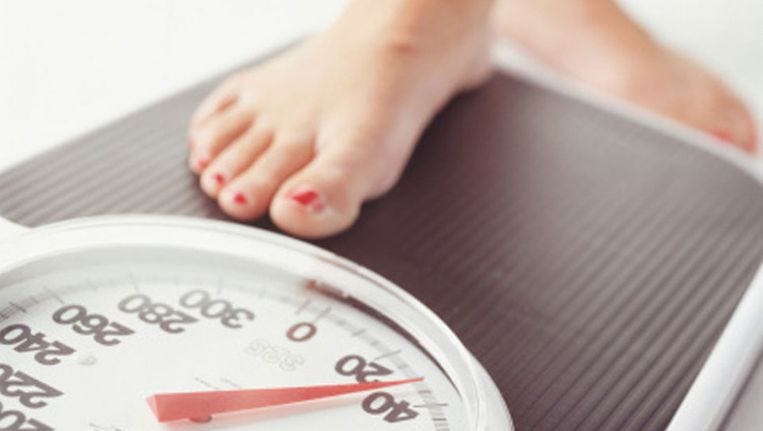
Research has shown that a good weight is more effective for good blood glucose than medicines ( source).
Because achieving a healthy weight in particular is important to bring type 2 diabetes into remission. As long as you are overweight, it will be difficult to control type 2 diabetes.
Losing visceral fat is important for the treatment of type 2 diabetes. This is the fat that is stored around organs such as the liver and pancreas. Visceral fat is also known as belly fat.
As long as you have too much visceral fat around the liver and pancreas, you will remain insensitive to insulin.
If you lose organ fat, your insulin sensitivity returns. With the return of insulin sensitivity, blood sugar will drop and the symptoms of diabetes will become more and more in the background.
This is why nowadays more and more doctors are looking at the waist circumference and not just calculating BMI just to stare at it.
Visceral Belly Fat
A person can have a good BMI and still have too much visceral fat.
The fat around the organs will push the abdomen outwards, creating a tummy tuck.
Men should aim for a waist circumference of no more than 94 cm and women 80 cm.
If you are overweight, it is important that you tackle this. This can be done in various ways.
People with type 2 diabetes can lose weight responsibly with a low-carbohydrate diet or through intermittent fasting.
A review article analyzed more than 70 published studies on intermittent fasting ( source). This shows that intermittent fasting works as a remedy against
aging and type 2 diabetes.
In any case, never lose weight with a low-fat diet or a protein diet. A protein diet in particular is very disadvantageous for people with diabetes.
With a low-carbohydrate diet you can also lose weight much faster than with a low-fat diet, according to research ( source). Low-carbohydrate diets are also easier to maintain than low-fat diets ( source).
Note: If you are taking medicines for blood pressure and/or for lowering blood glucose and are going to start losing weight, it is wise to do this in consultation with your specialist. By following a diet, your blood pressure or blood glucose in combination with medicines can become too low.
3.1 The low-carb diet
In type 2 diabetes, your body can no longer process carbohydrates properly.
After eating carbohydrates, they are digested into simple carbohydrates. Your body can absorb these simple carbohydrates via the blood in the form of glucose.
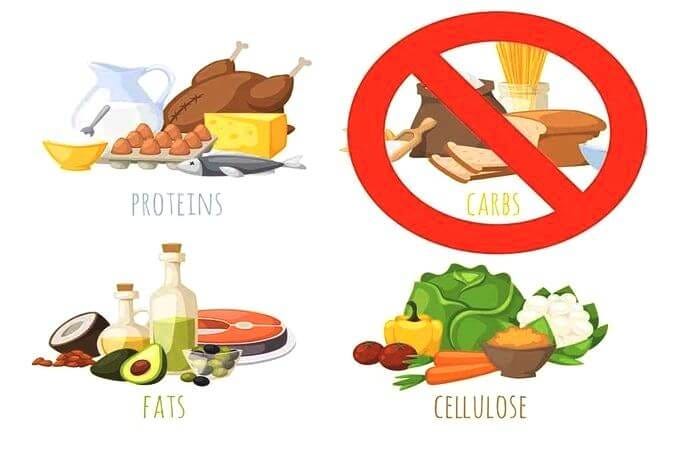
As your blood sugar rises, your pancreas produces insulin. This hormone is necessary to be able to absorb glucose from the blood into the cells.
In people with type 2 diabetes, this system no longer works as it should. This causes blood sugars to become too high, with all the harmful consequences that entails.
When type 2 diabetes develops, the pancreas starts to produce more and more insulin because the body has become increasingly insensitive to this hormone.
At some point, the pancreas becomes exhausted and it will then produce less insulin. The mechanism of producing insulin and absorbing glucose has then become completely out of balance ( source).
Stopping overloading this system is very effective for reversing type 2 diabetes. You can do this by eating a low-carbohydrate diet ( source, source).
By limiting the amount of carbohydrates we eat, the mechanism of insulin production and insulin sensitivity is less activated so that recovery can occur.
There are several studies that have proven the effectiveness of low-carbohydrate diets in controlling type 2 diabetes ( source, source, source, source, source, source, source).
A low-carbohydrate lifestyle also appears to work well in the long term for people with type 2 diabetes ( source). And even if a low-carb diet does not make you slimmer, you still benefit from the health benefits of low-carb eating, according to research ( source).
The Types of Carbohydrates That Raise Blood Sugar Levels
The carbohydrates in plant foods consist of a mix of starch, sugars and fiber. These proportions vary by food source. Potatoes, wheat and parsnips, for example, contain a lot of starch.
Banana, pineapple and mango are examples of fruits that contain a lot of sugar. And you can find a lot of fiber in pears, oranges and blueberries, for example.
You will understand that every food has a different effect on blood sugar. It is the sugars that cause blood sugar to rise the fastest.
Due to the starch, the blood sugar will rise, but less quickly than with sugars.
The dietary fibers ensure that the food leaves the stomach more slowly, so that the sugars and starch enter the small intestine less quickly.
In the thin, the glucose is withdrawn from the diet and released into the bloodstream. By eating fiber, the blood glucose rises less quickly after a meal.
Fiber is also a form of carbohydrates, but they are not broken down into glucose and do not raise blood sugar.
If you are going to calculate how many carbohydrates a vegetable or fruit contains, you can subtract the fiber component.
For example, parsnip contains 17 grams of carbohydrates per 100 grams, of which 5 grams are fiber. If you eat parsnips, 17 grams -/- 5 grams = 12 grams of carbohydrates will be converted into glucose.
The indigestible carbohydrates in and dietary fiber in plant foods are also called prebiotics. They play an important role in keeping the intestinal flora healthy and stimulate the growth of lactobacilli and bifidobacteria in the large intestine ( source).
A well-known probiotic is inulin. Insulin has been shown to improve type 2 diabetes ( source).
How many carbohydrates can you eat?
With low-carbohydrate diets, some people have the idea that you should eat almost no carbohydrates. Which is not the case.
Good results are achieved in people with diabetes with strict low-carbohydrate diets, see these studies: source source.
In these studies, participants were allowed to eat a maximum of 20 grams of carbohydrates per day, which is extremely little. Remember that fruits and vegetables also contain carbohydrates. Eating fruit is then in any case out of the question.
Other studies have shown that a carbohydrate intake between 70–90 grams per day is also effective in improving blood sugar levels ( source, source).
At 20 grams of carbohydrates per day you will have to replace the carbohydrates for fats. You are actually talking about a ketogenic diet and not about a low-carbohydrate diet.
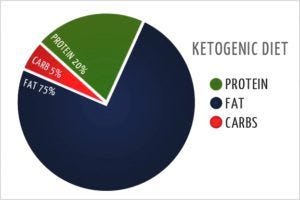
With a ketogenic diet, your liver starts producing ketone bodies that serve as an alternative fuel for glucose. With a ketogenic diet, your body becomes a fat burning machine that uses an alternative energy source (ketone bodies).
With a ketogenic diet, you are not allowed to eat fruit because of the carbohydrates and only few types of vegetables. This can eventually lead to a shortage of certain nutrients such as minerals and vitamins.
Improvements from the low-carb diet
In both people with type 2 and type 1 diabetes, there is improvement by following a low-carbohydrate diet.
With a moderate carbohydrate diet you can eat fruit, lots of vegetables and there is even room for healthy carbohydrate sources such as oatmeal.
Every body reacts differently to carbohydrates. It is important that your blood glucose after a meal does not exceed 8 mmol/L. Above this level, you can eventually develop nerve damage and other complications.
How much your blood glucose rises after a meal depends on the amount of carbohydrates you have eaten, the amount of dietary fiber, the type of carbohydrates and your insulin sensitivity.
When you start with a low-carbohydrate diet, it is important to measure your blood glucose before and after meals.
You can then adjust the amount of carbohydrates you eat up or down depending on your glucose.
The general rule is that the more carbohydrates you eat, the more your blood glucose will rise. Only by measuring your glucose can you adjust nutrition and possibly use medication ( source, source).
Want to know more about the low-carb diet? Read my extensive article about this.
Click to Watch this simple video on: How to Cure/ Manage Diabetes Without Drugs
Tip 4: Proteins
If you are going to eat low-carbohydrate, you will have to replace part of your carbohydrates for proteins and fats.
Proteins hardly affect the blood sugar level and ensure that you feel satisfied for longer after a meal ( source).
This is because proteins digest more slowly than carbohydrates and take longer to leave the stomach. This also helps with weight loss because you are less likely to need a snack between meals.
Rich in proteins are meat, fish, poultry, dairy, nuts and legumes. A pair of protein sources have additional benefits for people with diabetes. These are eggs and Greek yogurt.
4.1 Eggs
In people with diabetes and the metabolic syndrome, eggs have been shown to improve insulin sensitivity, reduce inflammation and improve cholesterol ( source, source, source, source).
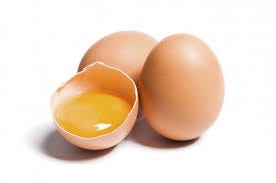
4.2 Greek yogurt
Greek yogurt appears to improve blood sugar ( source).
People with type 2 diabetes appear to be able to lose weight more easily with Greek yogurt in the diet ( source).
Tip 5: Fatty acids
The right fatty acids are important if you are trying to put type 2 diabetes into remission.
5.1 Nuts
Nuts are a good source of omega 3 fatty acids, fiber, and protein. Nuts help lower blood glucose, HbA1c values and LDL cholesterol ( source, source, source).
You don’t have to eat much of it. A small hand a day is enough. More than 30 grams of nuts per day offer no additional health benefits.
If you still want to lose weight, keep in mind that nuts are very high in calories. They contain about 650 kcal per 100 grams. A handful of nuts (30 grams) is therefore good for 200 kcal, about 10% of your daily calorie requirement.
You can eat all nuts, they are all healthy. Walnuts and almonds are also seen as the most healthy nuts.
Because each nut has its own specific health benefits, it is best to alternate the types or eat a nut mix.
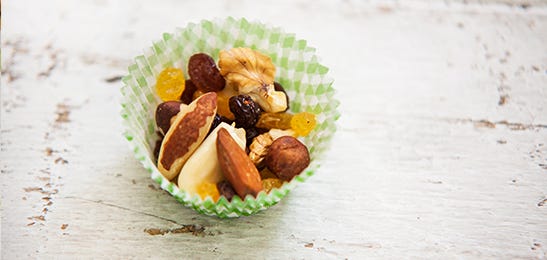
It is best to eat unroasted nuts. These are not heated so that the healthy omega 3 fatty acids have not started to oxidize. And by eating unsalted nuts you prevent your blood pressure from getting too high.
Peanuts are not nuts but legumes. It is better not to eat these often or not at all. Peanuts contain a lot of omega 6 fatty acids and disrupt a good omega 3 — omega 6 balance.
We already get enough omega 6 compared to omega 3. If the omega 6 is too high compared to omega 3, this actually promotes infections.
5.2 Fatty fish
Omega 3 is a collective name for certain polyunsaturated fatty acids. The most important are ALA (alpha-linolenic acid), EPA (eicosapentaenoic acid) and DHA (docosahexaenoic acid).
ALA is an essential fatty acid, the body cannot make it itself and it must be obtained through food.
The body can make EPA and DHA from ALA. However, because the body cannot do this efficiently, it is better to also get EPA and DHA from food.
Fatty fish such as salmon, herring, mackerel, anchovies and sardines are high in EPA and DHA. These fatty acids from fish improve fat metabolism, blood pressure and keep blood vessels healthy ( source).
These fatty acids also reduce infections (source, source) in people with diabetes.
For the EPA and DHA fatty acids, you can eat fatty fish twice a week and/or use fish oil, krill oil or algae oil capsules.
5.3 Olive oil
Olive oil is also a good source of vital omega 3 fatty acids and antioxidants. It reduces the risk of cardiovascular disease (source) and improves cholesterol levels (source, source).
5.4 Coconut oil
extra virgin coconut oil jar with cracked coconut Coconut oil mainly contains medium chain fatty acids (MCT, Medium Chain Triglycerides). This is in contrast to most fats.
The MCTs are healthy and good to take in diabetes. They help to lower blood sugar and increase insulin sensitivity (source, source).
Because coconut oil can withstand high temperatures, it is ideal for frying or stir-frying.
Tip 6: Eat a lot of fiber
fruits and vegetables in wicker baskets You have soluble and insoluble fiber. Both are good to eat. The insoluble fibers do have the greatest effect ( source, source).
The soluble fibers ensure that the blood sugar level gradually rises after a meal (source).
The insoluble fibers seem to raise blood glucose less ( source). Both types of fiber are therefore important to eat.
Dietary fibers are not only important for diabetes, they are always important for good health and should not be missing in a responsible diet. For example, by eating fiber-rich, the risk of cardiovascular disease is reduced ( source) and people live longer with a fiber-rich diet ( source).
Men should aim for about 38 grams of fiber per day. For women, this guideline is 25 grams per day ( source).
It can be quite difficult to get enough fiber from your diet, so I’m listing foods that are rich in fiber.
You can find dietary fiber in:
- Vegetable; carrots, beetroot, broccoli, artichoke and Brussels sprouts in particular
- legumes; lentils, kidney beans, split peas and chickpeas in particular
- Fruit; pears, strawberries, avocados, apples, raspberries and bananas in particular
- seeds; pumpkin and sunflower seeds in particular
- pips
- nuts; almonds, coconuts, pistachios and walnuts in particular
- Whole grains
- Quinoa
- Sweet potatoes
- Dark chocolate
A few comments about the above fiber-rich foods specifically for people with diabetes.
6.1 Sweet potatoes
Sweet potatoes are rich in carbohydrates, but these are slowly converted into glucose and are therefore the responsible alternative to regular potatoes.
Because sweet potatoes are rich in carbohydrates, they do raise blood glucose, so don’t eat too much of them. Sweet potato contains 20 grams of carbohydrates per 100 grams.
As a bonus, sweet potato contains more vitamins and minerals than regular potatoes. Sweet potato contains beta-carotene, vitamin A, B vitamins, calcium and magnesium.
6.2 Whole grains
Whole grains are preferred over processed grains (whole wheat bread instead of brown or white bread, for example).
Keep in mind that grains contain a lot of carbohydrates: 1 slice of wholemeal bread already contains 14 grams of carbohydrates, so that is very fast.
oatmeal blackberries Instead of (whole wheat) bread it is best to eat oatmeal as a source of carbohydrates and fiber.
Oatmeal is considered by many to be the healthiest grain there is. It is an unprocessed (whole grain) grain and is known as a good source of slow carbohydrates that are rich in essential minerals.
There are also studies that show that beta-glucans lower insulin resistance in people with type 2 diabetes ( source, source).
You can make porridge from oatmeal, but you can also make pancakes from it, for example.
Do not buy oatmeal that is sold as quick to prepare. This is oatmeal that is very finely ground. As a result, the oatmeal is still quickly digested and the blood sugar rises quickly.
6.3 Dark chocolate
Dark chocolate is very rich in fiber and thanks to its high concentrations it offers
antioxidants numerous health benefits.
99 percent cocoa of the Lindt brand. The disadvantage is that sugar is also used in chocolate. Therefore choose dark chocolate with the highest possible cocoa content (preferably 80%, but more is better), these contain less sugar.
Think of dark chocolate as a treat and stick to 1 piece of dark chocolate every day so that you don’t disturb your blood glucose too much.
Instead of dark chocolate, you can also use raw cocoa nibs or raw cocoa powder if you want to take advantage of the health benefits of chocolate.
It contains no sugar at all and it also contains 7 times as many antioxidants as dark chocolate because it has not been heated.
6.4 Quinoa
cooked quinoa in bowl Quinoa is a pseudo grain and ideal as an alternative to (white) rice. This is because the carbohydrates of quinoa are slowly converted into glucose.
Quinoa is rich in carbohydrates (63 grams per 100 grams), so eat it in moderation.
Quinoa is also rich in protein, making them more satiated than rice. This will help you eat less and lose weight.
Quinoa is also rich in essential minerals.
6.5 Superfoods with fiber
Because it is difficult to get enough fiber, you can supplement with certain superfoods.
spoon chia seed A superfood that is rich in fiber is chia seed.
Chia seed has a positive effect on blood glucose, blood pressure and inflammation ( source).
Chia seeds are not only rich in fiber, they also contain antioxidants that benefit people with diabetes. It contains chlorogenic acid, which ensures that less glucose enters the blood after a meal ( source).
Flaxseed is another superfood that is rich in fiber.
Tip 7: Minerals
If you have diabetes, two minerals are extra important. These are magnesium and chromium.
7.1) Magnesium
Magnesium is an essential mineral for our health. It is involved in about 700 processes in your body.
By including enough magnesium in your diet, you ensure that insulin resistance decreases and blood glucose stabilizes ( source).
magnesium-malate jar of the brand NOWYou can take magnesium in the form of magnesium supplements.
You can buy the best magnesium malate for this.
Magnesium Malate is a combination of magnesium and malic acid. This combination makes magnesium better absorbed. In addition, malic acid supports your glucose metabolism.
Certain foods are also rich in magnesium. You can eat nuts, avocado, oily fish, seeds, green leafy vegetables and (in moderation) dark chocolate.
Read also: 7 best weight loss pills supplements with proven effects
7.2) Chrome
brocolli roses Chromium (or chromium) is a mineral of which we need very little and we therefore fall into the category of trace elements.
You can find chromium in most fruits, vegetables, whole grains and nuts.
It is also found in small amounts in meat.
Tip 8: Herbs
People with diabetes benefit from certain herbs. These are:
These herbs can provide that last bit of improvement needed to reverse type 2 diabetes, if you’ve successfully implemented the key lifestyle changes.
Below I will discuss these herbs separately:
8.1 Cinnamon
wooden spoon with cinnamon Cinnamon imitates the effects of insulin and promotes the absorption of glucose from the blood into the cells. This helps to lower blood glucose ( source).
Cinnamon can be used in the preparation of dishes. For example, a pinch of cinnamon in the oatmeal porridge is nice. You can also sprinkle sliced apples with it, for example.
Cinnamon also appears to improve insulin sensitivity ( source, source).
Note: Eating too much cinnamon is not good for you. This can cause liver poisoning or cancer. You can safely use Chinese cinnamon in a dose of 0.5 to 2 grams per day. Ceylon cinnamon can be safely used up to 5 grams per day.
8.2 Berberine
Berberine works so well at lowering blood glucose that it often works even better than drugs intended for this ( source, source).
If you are taking medication, first consult with your pharmacist whether you can start using berberine. Berberine can negatively affect the effect of certain types of drugs.
Some people may experience diarrhea, constipation, or abdominal pain from berberine.
8.3 Fenugreek Seeds
fenugreek-seeds-potFenugreek seeds are sprouting seeds that you can buy at most health food stores. It is mainly used in curry but also in cakes and bread in the Arab cuisine.
In the Netherlands, fenugreek seed is used for fenugreek cheese, in a similar way to cumin cheese.
8.4 Garlic
Feel free to season your food with a clove of garlic. It helps lower blood glucose and lower LDL cholesterol.
8.5 Turmeric
Jar of ground turmeric from the Albert Heijn brand
Turmeric (turmeric) is a spice commonly used in Asia. For example, it gives the yellow color to curry powder in which it is processed.
Turmeric has a bizarre number of health benefits, too many to list here.
This is the Turmeric I use and recommend.
There is a difference in how well Turmeric is absorbed per brand and method.
For more information about Turmeric, I wrote this article.
8.6 Ginger
fresh ginger root cut open Ginger is a spice that is widely used in cooking worldwide.
Ginger is good for health and for people with diabetes in particular.
Ginger reduces blood sugar and HbA1c levels.
8.7 Onions
Onions can lower blood sugar ( source) in people with diabetes.
8.8 Black cumin
8.9 Ashwagandha
AshwagandhaAshwagandha is also known as Indian ginseng.
It is an herb used in traditional Indian herbal medicine.
Tip 9: Food supplements
In addition to herbs, you could start using a number of nutritional supplements.
With food supplements, just like with the use of herbs, they can provide the finishing touches. They only make sense if you have adapted your entire lifestyle.
9.1 Glucomannan
glucomannan root cut open A dietary supplement that can benefit people with diabetes is glucomannan.
It is root tuber from Asia and for sale as a supplement.
It ensures that carbohydrates digest more slowly ( source).
In addition, it is good for your cholesterol ( source) and blood pressure ( source).
9.2 Alpha Lipoic Acid
Alpha-lipoic acid is a coenzyme and reduces insulin resistance in people with type 2 diabetes ( source).
9.3 Vitamin C
vitamince C powder from the brand Jacob HooyPeople with diabetes benefit from vitamin C.
It lowers blood sugar and is also good for blood pressure and inflammation ( source).
For these effects you need 1000 mg of vitamin C daily, which is too much to get from food.
Vitamin C is naturally found in fruits and vegetables. You can supplement this with (unsweetened) vitamin C tablets or powder.
Tip 10: Apple cider vinegar
A home-garden-and-kitchen remedy that the health community is very enthusiastic about is apple cider vinegar.
It offers numerous health benefits, and especially for people with diabetes, it has some powerful properties.
Apple cider vinegar helps with weight loss, lowering blood sugar and improving the symptoms of diabetes.
Apple cider vinegar ensures that the blood glucose rises less after a meal and it also improves insulin sensitivity ( source, source, source, source, source).
If you inject insulin or take medication that stimulates the production of insulin, apple cider vinegar is unwise. Your blood glucose can then become dangerously low.
Tip 11: No stress
Stress is always bad for you but even worse if you want to get rid of diabetes.

Under the influence of cortisol, it will also be much more difficult to lose fat around the abdomen because fat is retained and stored under the influence of cortisol.
office worker practices mindfulness in the office For many people, work is a source of stress.
If you experience a lot of stress at work, you can discuss this. Perhaps you can get another position that is less stressful or you can get help with your work.
Looking for a less stressful job can also be an option.
In any case, create a better balance in your life.
Tip 12: Leave certain things
not eating If you want to “cure” diabetes in the sense of putting it into remission, it is not only the things you have to do or eat that are important. The things you shouldn’t do or eat are much more important.
Something you shouldn’t do is smoke and don’t get out of your chair. And there are also things that you should not eat.
If you do eat these things, the other things you do or eat will be of little use and will frustrate your goal of controlling type 2 diabetes.
What you should not eat are added sugars, refined carbohydrates and trans fats.
To clarify this, I give you an overview of foods that contain them below with an explanation.
12.1 Fruit juice
Fruit juice is considered a healthy drink. However, the effect of fruit juice on blood sugar is the same as that of soda. This also applies to the fruit juices that consist of 100% fruit juice and contain no added sugars!
Fruit juice is full of fructose ( source), the type of sugar that causes type 2 diabetes.
The problem with fruit juice is that the fiber of the fruit has been filtered out. As a result, the absorption of sugars is not slowed down as is the case with eating fruit.
So stick to eating fresh fruit and leave the fruit juices alone.
12.2 Dried fruit
dried fruit close-upDuring the drying of fruit, a lot of moisture is lost. This makes the amount of sugar more concentrated. Raisins contain 4 times as much sugar as grapes.
For the treatment of diabetes, it is better to go for fresh fruits that are low in sugars.
Fruits that are low in sugar are strawberries, raspberries, blueberries, blueberries, cranberries, lime, lemon and grapefruit.
12.3 Soda
Soft drinks are at the top of the list of the worst things you can take.
different brands of soda cansSoda is full of sugar and because these sugars are liquid, they will be absorbed directly into the blood. Soft drinks don’t offer you any nutritional value either.
Another point with liquid calories from sugars is that your brain does not register this in the same way as calories from solid food ( source, source).
Liquid calories from sugars do not give a feeling of satiety, so you do not automatically correct by eating less.
It will probably not surprise you that drinking soft drinks is associated with worsening insulin resistance ( source, source).
Drinking soda not only makes insulin resistance worse, it also causes belly fat, it reduces the metabolism and increases the risk of cardiovascular disease ( source, source). Enough reasons not to buy soft drinks anymore.
Soft drinks that are sweetened with sweeteners also have a negative effect on your insulin and blood glucose ( source). So it’s better to leave this one too if you’re trying to reverse type 2 diabetes.
What you can drink is water, (green) tea, herbal tea and coffee.
water-with-limeThis may be very boring at first if you are used to drinking soda. You will therefore have to be a bit more creative.
For example, on hot days you can track yourself on spring water with bubbles (such as Spa red) in which you put a slice of lemon or lime and ice cubes.
stevia-liquid-natural jarThe only responsible sweetener that does not raise blood sugar or insulin is stevia. Stevia even appears to lower blood sugar ( source, source).
You have to use pure stevia that can be bought at natural stores.
Green tea contains a unique antioxidant that ensures that the liver releases less glucose and improves insulin sensitivity ( source, source).
The best thing you can drink is plain water. Your kidneys regulate excess blood glucose by removing it through the urine.
12.4 Refined carbohydrates
Refined carbohydrates are industrially processed carbohydrates. A well-known example is flour.
white bread To make flour, the fibers of the grain are stripped, after which it is finely ground.
This processing creates carbohydrates that are broken down into glucose much faster by the body.
As a result, you have to deal with a peak in blood glucose after eating such carbohydrates ( source, source).
Refined carbohydrates that are regularly on the table for many people are bread, cereals, white rice and pasta.
sugary pastries In the form of snacks you often come across refined carbohydrates. You can find them in cookies, pastries, energy bars, rusks, crackers and bagels.
Refined carbohydrates aren’t just bad for your blood glucose. They also appear to affect memory in people with diabetes ( source).
This study showed that replacing regular bread with whole-wheat bread improved blood glucose in people with diabetes. It also improved blood pressure and cholesterol.
12.5 Trans fats
If there is one thing scientists agree on, it is that trans fats are harmful to health.
Trans fats also increase the risk of cardiovascular disease. Something you can’t have if you have diabetes since you already have an increased risk of cardiovascular disease.
Trans fats are created by processing vegetable oils. This processing is also known as hardening or hydrating fats.
This processing is done to improve the shelf life and structure of fats (without taking into account the health consequences).
trans fat margarine Trans fats can be found in most margarines, baking and roasting products, peanut butters, pastries and coffee creamers. They are also often found in snacks, cookies and even frozen meals.
Trans fats are so bad for your health that they are already banned in some countries. There are also countries that have already announced that they will ban trans fats.
In the Netherlands, people rely on self-regulation of the food industry and trans fats are still processed in our food (less than 10 years ago).
The bad thing about all this is that people are not obliged to indicate trans fats on the packaging.
However, if you see slogans on the packaging such as ‘vegetable fat, partially hydrogenated’, ‘hardened fat’ or ‘hydrogenated fat’ then you know that there are trans fats in the product and it is better to leave the product alone.
12.6 Flavored dairy products
packets of chocolate milk that make up the word NOYoghurts and flavored milk drinks are not a good idea if you want to cure diabetes.
Do not be tempted by slogans such as ‘light’, ‘fat free’ or ‘0% fat’.
Yogurts and flavored milk drinks often contain added sugars. And usually not just a little bit.
real-greek-yoghurtIt is best to choose real, natural, Greek yogurt. It is rich in protein and low in carbohydrates.
The proteins in Greek yogurt ensure that you get hungry less quickly, so that you eat fewer calories ( source).
Greek yogurt also appears to improve blood sugar ( source).
You can use some fresh fruits such as strawberries or blueberries to flavor your Greek yogurt.
Beware of Yogurt Greek Style. This is fake Greek yogurt that doesn’t have the health benefits of real Greek yogurt because it has more carbohydrates and much less protein.
12.7 Breakfast cereals
cruesli cereal packaging at a glance Almost all breakfast cereals are sweetened with some form of sugar. Let me put it this way; I haven’t been able to find unsweetened cereals in the supermarket yet, but maybe they do exist.
Apart from the sugar used in breakfast cereals, they are also processed (refined) carbohydrates.
The combination of sugar and processed carbohydrates in breakfast cereals will give your blood glucose a boost from eating them. Not a very good start to the day in my opinion.
Eating breakfast cereals is therefore high on my list of the worst things you can eat with diabetes.
granola oatmeal packaging Also be careful with breakfast cereals that claim to be healthy, such as the granolas on the shelf today.
These may be less bad than traditional breakfast cereals due to the use of nuts and seeds, but often also contain a lot of added sugar such as honey, syrup, corn syrup or regular sugar.
As an alternative to breakfast cereals, you can use oatmeal or muesli to which no sugars have been added.
12.8 All forms of sugar
Agave syrup from zonnatura Some people think that natural sugars are less bad than granulated sugar. Honey, maple syrup or agave syrup are then used as an alternative to granulated sugar.
The difference between, for example, honey and granulated sugar is that honey is not processed and granulated sugar is.
But whether you use granulated sugar or honey, they have the same effect on blood glucose, insulin and they increase inflammatory markers in the blood to the same extent (source).
If you want to bring type 2 diabetes into remission, you will have to avoid all forms of sugar as much as possible. There is (unfortunately) no such thing as a ‘good’ sugar.
To sweeten your food, you can use pure stevia that you can buy at natural stores. This is the only sweetener that does not raise insulin levels.
12.9 Most food is not okay
It is impossible to imagine, but sugar has been added to the majority of supermarket products ( source). Many food products are therefore not suitable to eat if you want to control type 2 diabetes.
With the above points I have named and explained a number of large and important product groups that you should avoid.
As a rule, you can eat anything that is unprocessed (assuming normal portions) and you should be alert to processed foods.
With processed food you will always have to read the ingredients carefully.
Anything that has added sugar, anything that contains refined carbohydrates, and anything that contains trans fats is inherently bad for you. This is regardless of any health claims made on the packaging. Also be aware of the many pseudonyms that are used for added sugars.
Recipes
Below I give you a number of recipes that fit within a healthy diet that can help you reverse type 2 diabetes.
Recipe 1: oatmeal with walnut & blueberries
This recipe is suitable for breakfast and consists of only responsible ingredients.
oatmeal with walnut and blueberries
The oatmeal is a good source of slow carbohydrates. The blueberries are low in sugar and a source of important antioxidants. The cinnamon ensures that the blood sugar does not rise too much and the walnuts are a perfect source of omega 3 fatty acids, protein and fiber.
Ingredients (for 1 person):
- 30 grams of oatmeal
- 30 grams of blueberries
- A cup of water
- Half a cup of unsweetened almond milk
- 15 grams of walnuts
- A pinch of cinnamon (to taste)
Preparation:
- Preheat the oven to 180 degrees.
- Line an oven tray with baking paper and spread the oats over it.
- Bake the oatmeal for 20 minutes until it is a nice golden brown.
- Bring the water with the almond milk to the boil in a pan and add the oatmeal. Let it
- simmer until the oatmeal is soft and creamy.
- Turn off the heat and add the blueberries, walnuts and cinnamon and stir.
- Put the whole thing in a bowl to serve. Add some blueberries for garnish.
It is not necessary to put the oatmeal in the oven first, this brings out the taste of oatmeal more. If you are in a hurry you can skip this.
With oatmeal and different fruits you can combine it yourself. The combination with strawberries or raspberries is also recommended. These fruits also do not contain a lot of natural sugars.
You can also add a teaspoon of chia seeds to your oatmeal. This gives you extra fiber that makes you feel full longer after breakfast.
Tip: if you want the oatmeal a little sweeter, you can add a few drops of pure stevia at the end.
Recipe 2: Poached egg with yogurt sauce
This recipe is suitable for breakfast or lunch. It is rich in proteins so that you can take it again for a long time. All ingredients are accounted for if you have diabetes or want to reverse it.
Poached egg with salmon and yogurt sauce on white plate
The salmon contains the important omega 3 fatty acids EPA and DHA that improve fat metabolism. The Greek yogurt helps in improving the blood sugar. The eggs improve insulin sensitivity and the turmeric lowers blood sugar.
Ingredients (for 1 person):
- 50 grams real Greek yogurt (natural)
- A pinch of turmeric
- Half a tablespoon of chopped fresh dill
- Juice of 1/4 lemon
- 1 teaspoon horseradish
- A pinch of white pepper
- Salt to taste
- 1 small and hard whole-wheat bread
- 2 slices of smoked salmon
- 2 poached eggs
- A tablespoon of chopped chives
Preparation:
- Put the Greek yogurt in a bowl with the turmeric and stir until it is a nice golden colour.
- Add the dill, horseradish, white pepper and some salt to the Greek yogurt and stir well.
- Poach the eggs in boiling water.
- Cut the wholemeal bread in half and cover each half with a slice of smoked salmon, the poached egg and the yogurt sauce.
- Sprinkle the buns with yogurt sauce and enjoy.
Tip: if you want fewer carbohydrates, replace the whole-wheat bun with a whole-wheat rice cake or omit the bun altogether and add some raw vegetables. Thanks to the many proteins in this dish, you don’t have to worry about being hungry again soon.
Recipe 3: Zucchini bolognese with mushrooms
Zucchini is a responsible alternative to the carbohydrate-rich spaghetti.
Zucchini is made from zucchini using a spiralizer. A spiralizer (spirelli) makes beautiful strings of vegetables such as zucchini, carrot and cucumber.
For this recipe we are making spaghetti from zucchini. Zucchini contains only 3 grams of carbohydrates and 16 kcal per 100 grams.
The great thing about Italian food is that you can use plenty of garlic and olive oil with it.
Both have been discussed briefly in this article and are good for you if you have diabetes and want to put the chronic condition into remission.
Ingredients (1 person):
- Zucchini that you make zucchini
- 1 tablespoon extra virgin olive oil
- 1 onion cut into small pieces
- 2 cloves garlic, finely chopped
- 1 large carrot cut into cubes
- 150 grams mushrooms (sort to taste) cut into pieces
- 1 teaspoon apple cider vinegar
- 200 grams peeled tomatoes from a can
- Half a tablespoon of chopped basil
- Salt and pepper to taste
Preparation:
- Fry the onion, carrot, garlic in a tablespoon of olive oil until the carrot is soft
- Add the mushrooms, tomatoes, apple cider vinegar and spices. Cook the whole thing until it is nicely thickened
- In a separate pan, put the zucchini with a tablespoon of olive oil and a dash of water.
- Heat the zucchini for 5 to 8 minutes without them becoming overcooked and limp.
- Put the courgetti in a bowl and spoon the bolognese sauce from the mushrooms over it and enjoy.
Finally, I would like to wish you the best of luck with putting type 2 diabetes into remission. If you have any questions, feel free to ask them in the comments below. I will then try to answer your questions as soon as possible.
Reversing type 2 diabetes ?
It has recently been discovered that it is possible to reverse type 2 diabetes. You can find everything you need in the supermarket.
You turn it around with one powerful method. It’s what I call “The Diabetes-Free Secret.” About this secret I wrote a few pages that will change your life forever. You will learn in it:
Why You Got Type 2 Diabetes
What mechanism can you use to reverse diabetes
The best tips to be diabetes-free in a few weeks
Enter your best email address to get the Free E-Book, Click Here…
Originally published at https://khalories.com on September 2, 2021.